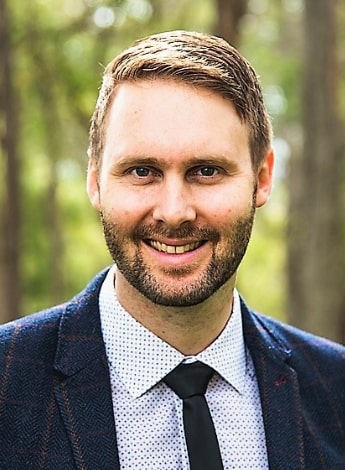
ACL recovery without surgery

Returning to daily activity or playing sport after an ACL injury does not need to depend on surgical intervention.
Anterior cruciate ligament (ACL) injuries are an extremely common and costly injury in the Australian general and sporting population.
I have long advocated for the benefits of a comprehensive non- operative management program to treat knee pain or post-ACL injury.
I have overseen thousands of ACL full-thickness tears managed without surgery, including patients who have returned to high-level pivoting, jumping and cutting tasks.
Yet in our sporting nation an ACL injury is often described as ‘career- or life-ending’, with treatment starting at the almost default position of seeking surgical opinion, followed by surgery.
Almost routinely, patients are offered surgical care to return to high-level activity and pivoting sports.
Often this is done in the absence of a shared decision-making process, with the injured person not being informed of other options, such as starting treatment with rehabilitation.
This concept, as well as the dire view of a patient or athlete who has suffered an ACL injury or meniscal tear, has been widely propagated in mass media and has affected populations both amateur and professional.
Current best research challenges these ingrained paradigms, highlighting the fact that ACL injuries and meniscal tears have the capacity to heal, depending on the case presentation.
Physiotherapists have a long and proud history of connecting with our patients—emotionally and physically.
We’re probably at the pinnacle of physiotherapy in the world in Australia—we have physiotherapists leading in research, clinical services and teaching.
I feel very privileged to be a physiotherapist and proud to be able to use my skills to make a difference to someone who has been injured, either through sport or through daily activities.
Until the start of the COVID-19 pandemic, ACL injuries and reconstructions were on the rise worldwide and Australia had one of the highest rates of reconstruction in the world.
In 2020 and 2021, the rate of knee injuries and surgeries slowed for two pivotal reasons: the cancellation of organised sports and a pause on elective surgery.
Meanwhile, there was a rise in the availability of telehealth.
The online service either opened up or enabled the continuation of access to medical or allied health services without the risk of passing on the virus during treatment in a hospital or clinical setting.
Telehealth also removed barriers to treatment, such as distance, time and cost.
The inability to access treatment in a clinical setting pushed some people in the stay-at-home pandemic world to go online to seek information about a condition or access treatment.
This included discovering nonsurgical treatment options available for ACL injuries.
Recent research on large groups, from the paediatric general population to the elite level, has shown that people can cope well without ACL surgery as well as a growing awareness that ACLs can heal.

Kieran Richardson
Research informs practice.
Non-operative management of ACL injuries is low risk.
It empowers patients and draws on a strong commitment to evidence-based care and to a holistic, biopsychosocial consideration of each patient.
My approach to treatment, as a clinician, is to discuss the options with the individual and agree on contingency plans.
Nonsurgical management of ACL injuries is individualised and comprehensive, driven by criteria and focused on the specific presentation and circumstances of the patient.
It begins with the initial consultation, in which key strategies, including the potential use of manual therapy, are explored to best maximise the chance of non-operative success.
We spend time drawing out the patient’s goals and expectations and ensuing that they understand the injury.
We then go through all of the options and the risks and benefits of each.
Typically, a period of rehabilitation is recommended as the first step.
A thorough treatment and management plan is then created, with phases broken up into symptom relief, building capacity, return to sport and, I should say, prevention.
Has surgery been excessive in the past? I think so. Is there an opportunity for physiotherapists to be proactive in resisting the default position of seeking surgical opinion, followed by surgery? Yes.
Through additional training, clinicians can accrue knowledge, information and the practical skills and confidence to best assess and provide a comprehensive non-operative management program to a patient presenting after ACL injury.
This would include knowing how to apply a range of manual therapy techniques in the acute phase of the injury, which helps to reduce pain and swelling, improve range of motion and muscle length and normalise muscle activation and patterns of movement.
Then, at the mid-to-end stages of recovery, clinicians can introduce evidence-based strengthening and cutting and sports-specific exercises to support the patient’s return to pivoting sports.
A methodical approach to surgical versus nonsurgical treatments for ACL and meniscal tears has strong applicability to other body areas.
I can see our profession disrupting today’s healthcare model in a positive way—flipping it upside down so that physiotherapists triage people who present with injury in a medical or hospital setting.
The UK has successfully introduced a physiotherapist-led model in which physiotherapists triage patients before doctors.
It’s a supportive system and doctors have welcomed it as it saves them time and the healthcare system money.
They only see patients who really need medical care.
Physiotherapy-led triage presents an opportunity to reform healthcare, reduce expenditure and offer patients access to treatment early for a range of conditions, including ACL injury.
>> Kieran Richardson FACP is a Specialist Musculoskeletal Physiotherapist (as awarded by the Australian College of Physiotherapists in 2016) and an APA Musculoskeletal Physiotherapist. He has a master’s in clinical physiotherapy (majoring in manipulative therapy) from Curtin University and a Fellowship at the Australian College of Physiotherapists. As the director of Global Specialist Physiotherapy, Kieran uses the latest research to train clinicians. He provides formal mentoring and second opinions for physiotherapists and clinics.
© Copyright 2024 by Australian Physiotherapy Association. All rights reserved.





